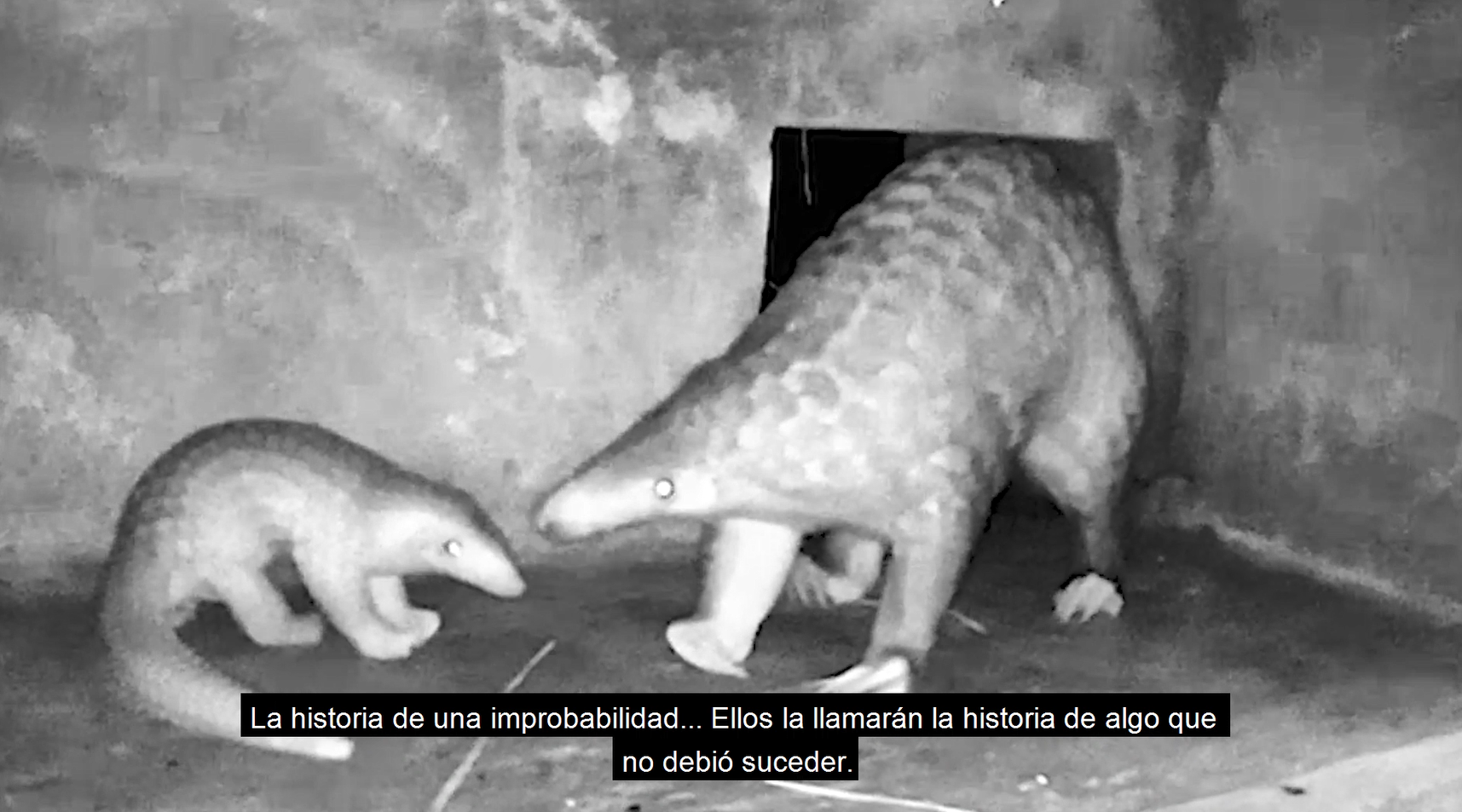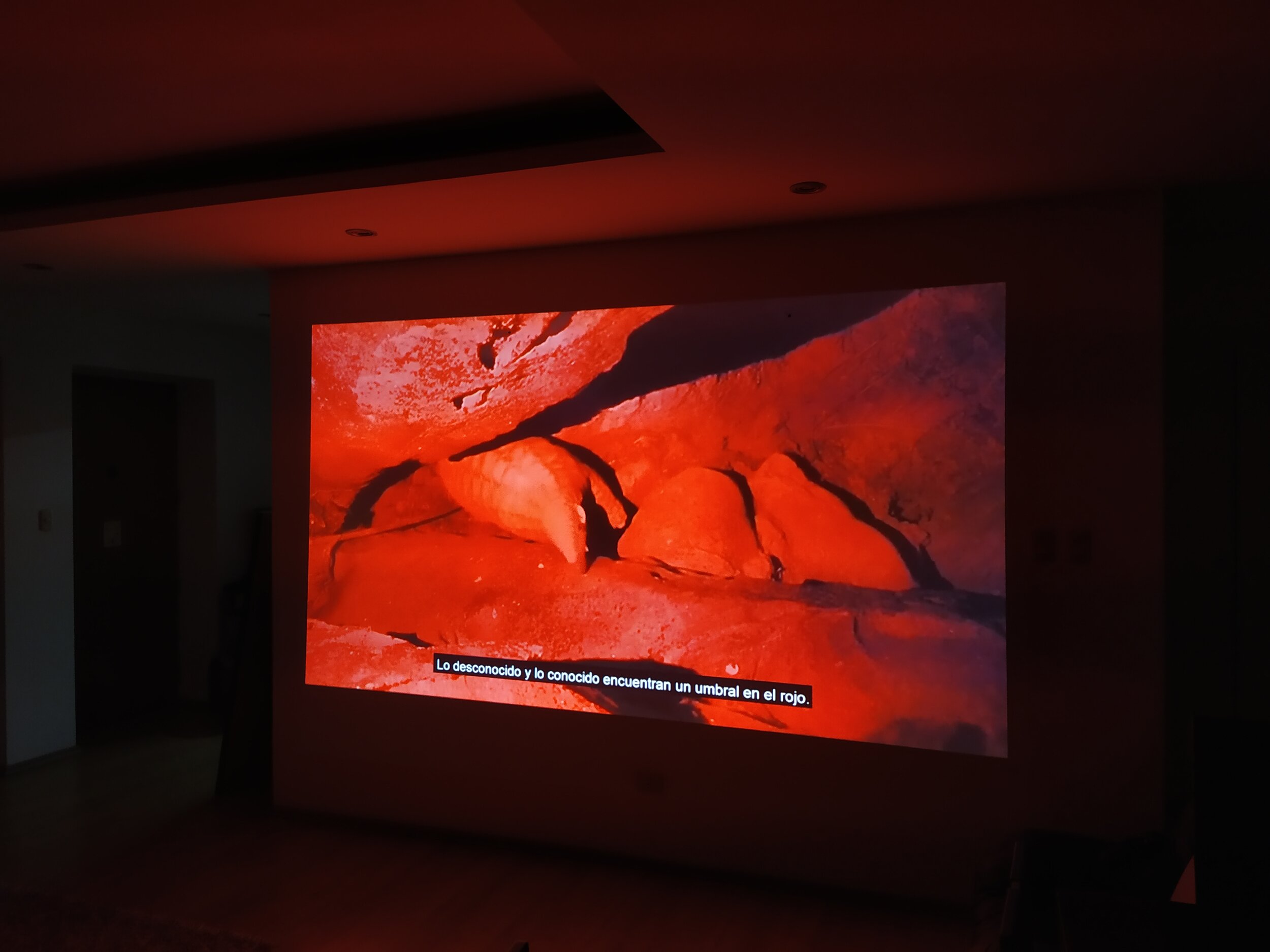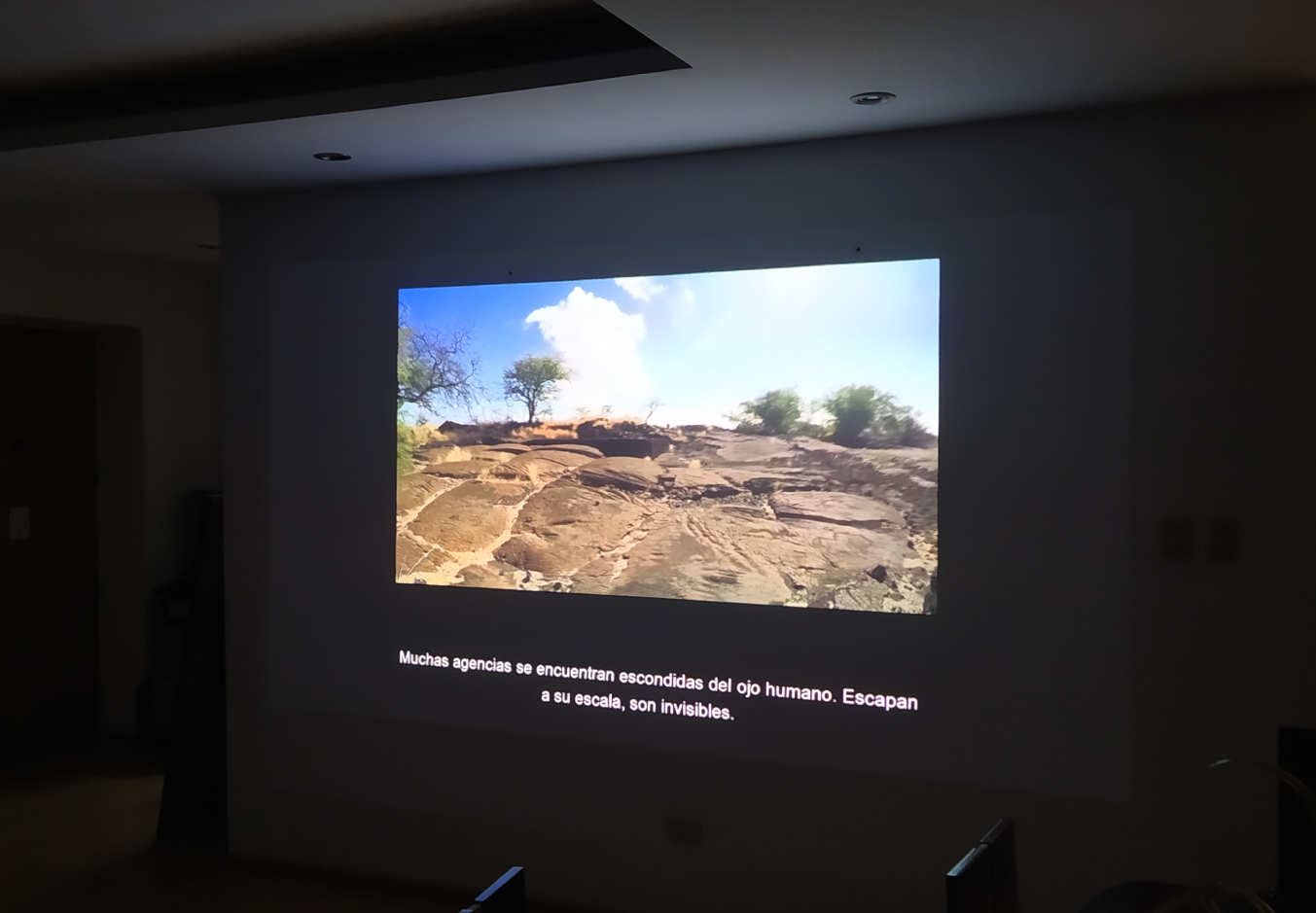150320 (2020 - 2021)
El Pangolín Rojo (2020)
Animal Critical Studies – Covid19 – Narrativas No-Humanas – Teoría/Ficción – Virus
El pangolín es una de las dos especies sospechosas de haber cobijado la mutación de la Covid19 (la otra siendo el murciélago). Este animal es un punto de partida para una reflexión sobre las historias detrás del mamífero más traficado del mundo. El pangolín consigue narrar su historia: una historia de extractivismo, dolor y mistificación. En paralelo a la visión del animal, el virus se expande saltando fronteras humanas fácilmente y el rojo aparece como un marcador de esta expansión global. La historia del virus y del pangolín no son la misma, pero encuentran un espacio de interconexión en el color rojo de la sangre y de la alerta. Este color es otro detonante para pensar los limites del conocimiento y la agencia humana, limites donde precisamente el pangolín y el virus existen de maneras alternativas frente al relato del excepcionalismo humano. El pangolín rojo es aquel que demanda más de estas historias para que amplíen, diversifiquen y complejicen la pretensiosa idea humana de poseer una sola narrativa objetiva y verosímil para mirar al mundo, administrar el mundo y habitar en el mundo.
En
The Red Pangolin
The pangolin is one of the two species suspected of having sheltered the Covid19 mutation (the other being the bat). This animal is a starting point for reflection on the stories behind the world's most trafficked mammal. The pangolin manages to tell its story, a story of extractivism, pain and mystification. Parallel to the animal's vision, the virus spreads easily over human borders, the color red appears as a marker of this global expansion. The history of the virus and the pangolin are not the same, but they find a space of interconnection in the red color of blood and alert. This color is another starting point to think the limits of knowledge and human agency, limits where precisely the pangolin and the virus exist in alternative ways to the human story. The red pangolin is, then, the entity that demands more stories that can expand, diversify and problematize the human pretension of possessing the only plausible narrative to look at the world and inhabit it.







El Caminante Autoinmune (2021)
Covid19 – Posverdad – Pintura Occidental – Ecocrítica
Durante los primeros meses de confinamiento en marzo, abril y mayo del 2020, los procesos de información global se hicieron más accesibles a través de las pantallas celulares. Los medios de comunicación tradicionales perdieron una importante plataforma frente a las redes sociales y chats colectivos que se volvieron canales preferidos para masivamente intercambiar y compartir información encontrada en la web. La veracidad o especificidad de estas informaciones son difíciles de rastrear puesto que son contenidos virales cuya metadata no siempre es transparente. Entre las múltiples noticias que inundaron las pantallas estos primeros meses, resalta el de la idea de “la naturaleza está sanando” afianzada por avistamientos de delfines en el Bósforo, cisnes en Venecia, etc. Los cuerpos animales “volviendo” a sus territorios históricos y la data cuantitativa sobre el descenso de contaminación en grandes ciudades parecían síntomas que confirmaban que “nosotros somos el verdadero virus”. Esta visión tiene dos ejes importantes. En primera instancia, parte de la noción romántica de una naturaleza que tiende a regresar a la armonía si la dejamos ser. Esta visión es relativamente nueva y parte de las concepciones de ecosistemas de principios del siglo XX. En realidad, la ecología contemporánea entiende que no existe armonía en los procesos entrópicos de la naturaleza y la idea de autobalance es más de la máquina que de la naturaleza. En segunda instancia, entendernos como una especie foránea al colectivo vital llamado naturaleza es muy problemático. Exaltando la división occidental de sujeto (humano) y objeto (planeta) solo conseguimos alienar más las acciones de la humanidad y entendernos como ajenos a todo proceso ecológico. Sí somos una anti-ecología, entonces solo queda ser mártires del planeta y extinguirnos. Esta visión ha sido tildada de eco-fascista por su profunda nostalgia reaccionaria frente a un ideal natural que más está en las pinturas de Friedrich que en la realidad. El caminante sobre el mar de nubes es un icono del romanticismo y el género paisajístico pictórico occidental, el hombre contemplando el territorio, no lo ve, pero asume que está ahí para él. Perderse en los valles profundos y oscuros de lo planetario con solo una luz de linterna y pensar tener una visión total del espacio recorrido, esta es la analogía de una visión antropocéntrica del otro no-humano. Es necesario pensar un planeta viral, pero no autoinmune, donde los procesos ecológicos sean estéticas significantes y no contemplaciones románticas que no activan eficientemente el nivel político que permitiría una mejor cohabitación entre especies para una supervivencia terrenal común.
En.
The Autoinmune Wonderer
During the first months of quarantine in March, April and May 2020 traditional media lost an important platform to social networks and collective chats exchanging and sharing information found on the web. Among the many news that flooded the screens these first months, the idea of "nature is healing" stands out, strengthened by sightings of dolphins in the Bosphorus, swans in Venice, etc. The animal bodies "returning" to their historical territories and the quantitative data on the decrease in pollution in large cities looked like symptoms that confirmed that "we are the true virus." This vision has two important axes. In the first instance, it starts from the romantic notion of a nature that tends to return to harmony if we let it be. This vision is relatively new and part of the ecosystem conceptions of the early 20th century. In reality, contemporary ecology understands that there is no harmony in the entropic processes of nature and the idea of self-balance is more one of the machine than of nature. In the second instance, understanding ourselves as a foreign species to the vital collective called nature is very problematic. By exalting the western division of subject (human) and object (planet), we only manage to further alienate the actions of humanity and understand ourselves as alien to all ecological processes. The Wonderer above the Sea Fog by Friedrich is an icon of romanticism and the western pictorial landscape genre, the man contemplating the territory, does not see it, but assumes that it is there for him. It is necessary to think of a viral planet, but not an autoimmune one, where ecological processes are aesthetically significant and not romantic contemplations that do not efficiently activate the political level that would allow a better cohabitation between species for a common earthly survival.



